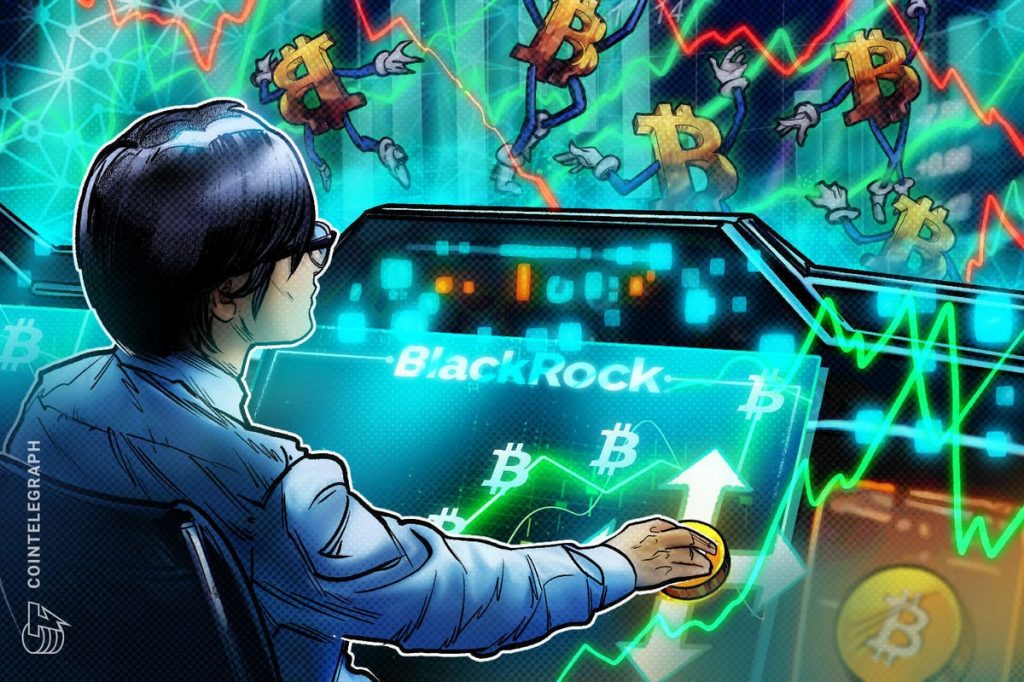Debate whether Bitcoin’s 21 million supply cap is truly fixed or not has resurfaced after BlackRock posted a three-minute Bitcoin explainer video, which added a disclaimer that there’s no guarantee it won’t be changed.
Bitcoin’s fixed supply is one of its strongest value propositions as a store of value, and uncapping its supply would, without a doubt, impact how investors view the cryptocurrency.
In the Dec. 17 video, BlackRock explained that Bitcoin has a fixed supply of 21 million, adding that the “hard-coded rule controls supply, purchasing power and helps avoid the potential misuse of printing more and more currency.”
However, it also added a disclaimer that read: “There is no guarantee that bitcoin’s 21 million supply cap will not be changed.”
The video has since been reposted by MicroStrategy chairman and Bitcoin bull Michael Saylor, leading some critics to suggest that Bitcoin (BTC) isn’t theoretically scarce after all.
BlackRock explains #Bitcoinpic.twitter.com/X2fPl8tL2s
— Michael Saylor⚡️ (@saylor) December 17, 2024
“When the supply cap increase happens, it will have ‘always been part of the plan,’” claimed Dashpay’s Director of Marketing and Business Development Joel Valenzuela, who added:
“And today, in 2024, people have the audacity to say Bitcoin wasn’t hijacked.”
“BlackRock understands Bitcoin better than Bitcoiners,” pseudonymous Ethereum developer Antiprosynthesis added.
Can Bitcoin’s 21M supply cap be changed?
Whether Bitcoin’s supply cap can be changed or not depends on how one defines “Bitcoin,” Super Testnet, a Bitcoin developer behind BitVM, told Cointelegraph.
Some say it can theoretically be changed if several community members — from node operators and core developers to miners and investors — reach a consensus on a hard fork by moving to the new chain.
Developers would likely first make a proposal to spark community discussion to see where the consensus is before implementing the rule changes into Bitcoin Core.
A hard fork would then result and community members would need to decide which new ruleset they would transition to.
If the vast majority of node operators and miners start supporting the new fork, evidenced by it winning more market share and hashrate, then they would be operating under the “new” Bitcoin network with the uncapped supply.
However, Super Testnet said while this is possible, the resulting new chain won’t be “Bitcoin.”
“The inflation cap is definitional to Bitcoin,” Super Testnet said, pointing to Satoshi Nakamoto’s Bitcoin whitepaper.
“Eliminate that, and whatever you have isn’t Bitcoin anymore. You might as well ask what it would take to turn Bitcoin into PayPal.”
In other words, an uncapped supply version of “Bitcoin” won’t be Satoshi Nakamoto’s Bitcoin.
There are 1.09 million Bitcoin left to be mined under the 21 million fixed supply rule. Source: BitBo
Who would want it to change?
Bitcoin’s security model relies on individuals and entities to mine Bitcoin, but they must be economically incentivized to do so.
By contributing hashrate, miners are paid a block subsidy and receive a transaction fee on top of that for each Bitcoin block mined.
However, that block subsidy halves every 210,000 blocks, which means Bitcoin’s price must continue to increase, transaction fees rise substantially, or a combination of both for miners to be incentivized.
Related: Eric Trump predicts Bitcoin will hit $1 million, praises scarcity
Miners are currently awarded 3.125 Bitcoin — currently worth $316,950 — for mining a block but that will half again to 1.625 Bitcoin at block height 1,000,050 in or around 2028.
Bitcoin miners benefited massively from a spike in transaction fees earlier in 2024 during the Bitcoin Ordinals mania. However, interest in Bitcoin’s decentralized finance space and network activity stemming from it has largely been seasonal.
In May, Bitcoin mining pool viaBTC explained to Cointelegraph that Bitcoin’s application layer must continue being developed to sufficiently compensate Bitcoin miners in the decades to come, as the last Bitcoin will be mined in or around 2140.
Bitcoin miners alone will not be able to trigger a new, successful Bitcoin hard fork, according to Super Testnet.
It’s decentralized, there isn’t an authority that can provide the guarantee.
Though you can self-guarantee by using your own node.
— Pierre Rochard (@BitcoinPierre) December 18, 2024
This was seen in the Blocksize War in 2016 and 2017 when around 95% of the Bitcoin miners wanted to raise the block size limit in an attempt to allow Bitcoin to scale.
However, most node operators and investors decided not to adopt this change, and developers started building more layer 2 solutions soon after.
Magazine: Comeback 2025: Is Ethereum poised to catch up with Bitcoin and Solana?


